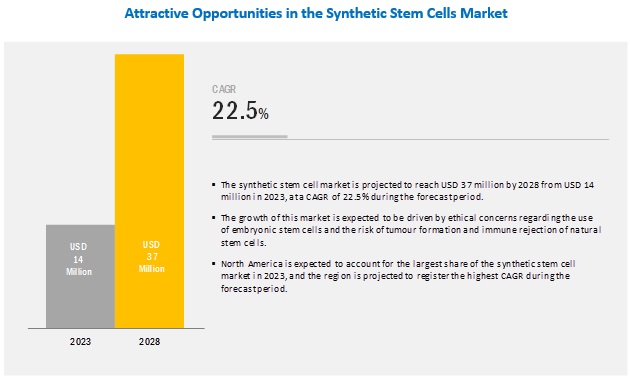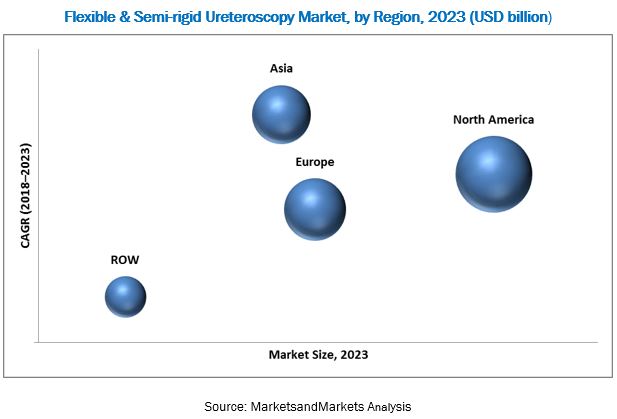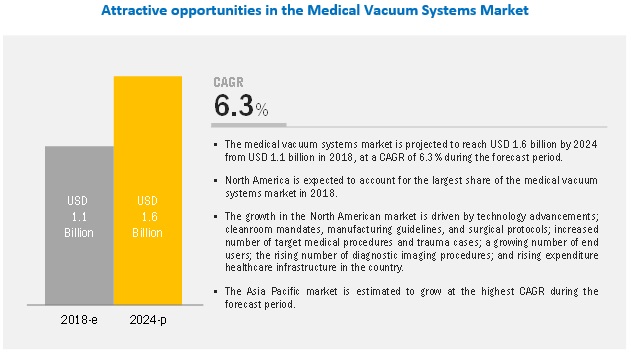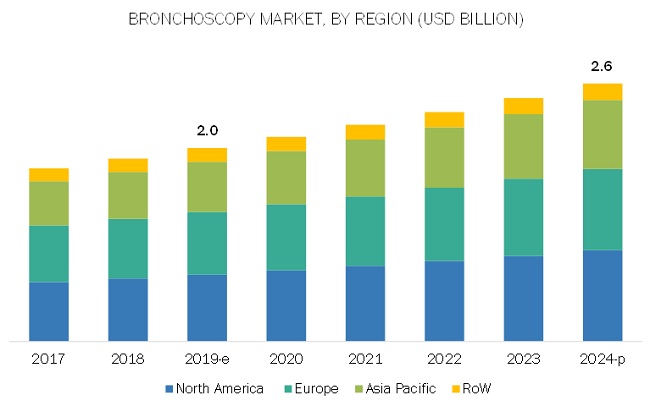The study involved four major activities in estimating the current market size for synthetic stem cells. Exhaustive secondary research was conducted to collect information on the market as well as its peer and parent markets. The next step was to validate these findings, assumptions, and sizing with industry experts across the value chain through primary research.
Secondary Research:
In the secondary research process, various secondary sources such as Hoovers, Bloomberg Business Week, Forbes, and Dun & Bradstreet were referred to, to identify and collect information useful for this technical, market-oriented, and commercial study of the synthetic stem cells industry. These secondary sources included annual reports, press releases & investor presentations of companies; white papers; certified publications; articles by recognized authors; gold standard & silver standard websites; food safety organizations; regulatory bodies; trade directories; and databases. Secondary research was mainly used to obtain key information about the industry’s supply chain, the total pool of key players, market classification, and segmentation, according to the industry trends to the bottom-most level and regional markets.
According to the new market research report “Synthetic Stem Cells Market by Application (Cardiovascular Disease, Neurological Disorders, Other Applications (Cancer, Diabetes, Gastrointestinal, Musculoskeletal Disorders)), Region (North America (US, Canada), Europe, APAC, RoW) – Global Forecast to 2028″ published by MarketsandMarkets™, the artificial stem cells market is expected to grow from USD 14 million in 2023 to USD 37 million by 2028, at a CAGR of 22.5% during the forecast period
Request Research Sample Pages: https://www.marketsandmarkets.com/requestsampleNew.asp?id=4959435
Geographically; North America is estimated to account for the largest share of the market in 2023. North America is the pioneer of synthetic stem cell technology. Also, North America leads in the R&D of stem cell therapies globally, with the registration of the highest number of clinical trials (more than 1400) on stem cells till 2018. This is further backed by the high rate of adoption of advanced therapies in the US (more than 600 stem cell therapy clinics in the US in 2016).
The key developers of synthetic stem cell technology are North Carolina State University (NCSU) (US) and Zhengzhou University (China).
Market Size Estimation;
The top-down approach was used to estimate and validate the total size of the synthetic stem cells market. The approach was also used extensively to estimate the size of various sub-segments in the market. The research methodology used to estimate the market size includes the following:
– Synthetic stem cells that could be used as therapy were identified through secondary research, and their market shares in the respective segments were determined through primary and secondary research.
– The procedure included extensive interviews with industry leaders such as CEOs, VPs, directors, and marketing executives for key insights.
– All percentage shares, splits, and breakdowns were determined using secondary sources and are verified through primary sources.
– All possible parameters that affect the markets covered in this research study have been accounted for, viewed in extensive detail, verified through primary research, and analyzed to get the final quantitative and qualitative data.
Download PDF Brochure: https://www.marketsandmarkets.com/pdfdownloadNew.asp?id=4959435
The cardiovascular diseases segment accounted for the largest share during the forecast period.
The major applications of synthetic stem cells include cardiovascular diseases, neurological disorders, and other diseases that require regenerative therapy. Cardiovascular diseases have high prevalence across the globe. Currently, synthetic mesenchymal cells have been developed only for cardiac tissue and have been tested in mice models. The research on cardiac synthetic stem cells is expected to enter the clinical phase in the coming 2-3 years, and the first commercial product would be cardiac synthetic stem cells in the next five years.
The study involved four major activities in estimating the current market size for synthetic stem cells. Exhaustive secondary research was conducted to collect information on the market as well as its peer and parent markets. The next step was to validate these findings, assumptions, and sizing with industry experts across the value chain through primary research.
Secondary Research:
In the secondary research process, various secondary sources such as Hoovers, Bloomberg Business Week, Forbes, and Dun & Bradstreet were referred to, to identify and collect information useful for this technical, market-oriented, and commercial study of the synthetic stem cells industry. These secondary sources included annual reports, press releases & investor presentations of companies; white papers; certified publications; articles by recognized authors; gold standard & silver standard websites; food safety organizations; regulatory bodies; trade directories; and databases. Secondary research was mainly used to obtain key information about the industry’s supply chain, the total pool of key players, market classification, and segmentation, according to the industry trends to the bottom-most level and regional markets.
According to the new market research report “Synthetic Stem Cells Market by Application (Cardiovascular Disease, Neurological Disorders, Other Applications (Cancer, Diabetes, Gastrointestinal, Musculoskeletal Disorders)), Region (North America (US, Canada), Europe, APAC, RoW) – Global Forecast to 2028″ published by MarketsandMarkets™, the artificial stem cells market is expected to grow from USD 14 million in 2023 to USD 37 million by 2028, at a CAGR of 22.5% during the forecast period
Request Research Sample Pages: https://www.marketsandmarkets.com/requestsampleNew.asp?id=4959435
Geographically; North America is estimated to account for the largest share of the market in 2023. North America is the pioneer of synthetic stem cell technology. Also, North America leads in the R&D of stem cell therapies globally, with the registration of the highest number of clinical trials (more than 1400) on stem cells till 2018. This is further backed by the high rate of adoption of advanced therapies in the US (more than 600 stem cell therapy clinics in the US in 2016).
The key developers of synthetic stem cell technology are North Carolina State University (NCSU) (US) and Zhengzhou University (China).
Market Size Estimation;
The top-down approach was used to estimate and validate the total size of the synthetic stem cells market. The approach was also used extensively to estimate the size of various sub-segments in the market. The research methodology used to estimate the market size includes the following:
– Synthetic stem cells that could be used as therapy were identified through secondary research, and their market shares in the respective segments were determined through primary and secondary research.
– The procedure included extensive interviews with industry leaders such as CEOs, VPs, directors, and marketing executives for key insights.
– All percentage shares, splits, and breakdowns were determined using secondary sources and are verified through primary sources.
– All possible parameters that affect the markets covered in this research study have been accounted for, viewed in extensive detail, verified through primary research, and analyzed to get the final quantitative and qualitative data.
Download PDF Brochure: https://www.marketsandmarkets.com/pdfdownloadNew.asp?id=4959435
The cardiovascular diseases segment accounted for the largest share during the forecast period.
The major applications of synthetic stem cells include cardiovascular diseases, neurological disorders, and other diseases that require regenerative therapy. Cardiovascular diseases have high prevalence across the globe. Currently, synthetic mesenchymal cells have been developed only for cardiac tissue and have been tested in mice models. The research on cardiac synthetic stem cells is expected to enter the clinical phase in the coming 2-3 years, and the first commercial product would be cardiac synthetic stem cells in the next five years.







